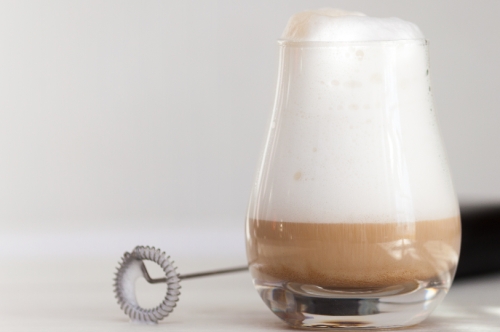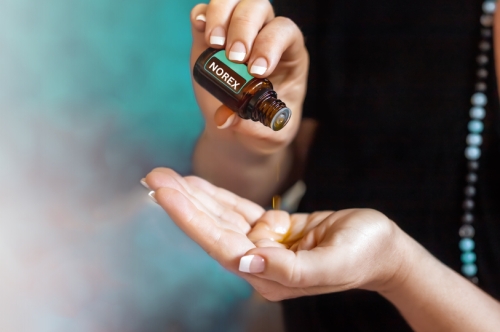Family of Mentha: Types, Uses, Benefits & Facts | Ultimate Guide

Family of Mentha: Description, Genus, Species, Uses, & Facts
Introduction: The Fascinating World of Mint
Welcome to the wonderful world of mint! Mint, belonging to the genus Mentha, is an incredibly versatile herb that has been cherished for centuries for its medicinal, culinary, and aromatic properties. From adding a refreshing twist to drinks and desserts to calming upset stomachs and aiding in digestion, mint has become a staple in kitchens and medicine cabinets around the world.
In this comprehensive guide, we’ll explore the scientific classification, cultivation, varieties, health benefits, uses, and fascinating facts about the family of mentha. We’ll also provide expert insights, actionable tips, and answer the most common questions about mint. Get ready to dive into the minty goodness!
Scientific Classification of Mentha
- Kingdom: Plantae
- Division: Magnoliophyta
- Class: Magnoliopsida
- Order: Lamiales
- Family: Lamiaceae
- Genus: Mentha
The Mentha genus includes several species and hybrids, each with unique characteristics and applications. Mint’s botanical family, Lamiaceae, is also known as the mint family and includes other aromatic herbs like basil, rosemary, and sage.
How is Mentha Cultivated? (With Expert Tips)
Mentha, commonly known as mint, is a herbaceous perennial plant widely grown for its aromatic leaves and essential oils. Its cultivation is relatively straightforward, making it a profitable crop for both small and large-scale farmers.
Step-by-Step Guide to Mentha Cultivation
-
Climate & Soil Requirements:
Mint thrives in cool, moist environments and prefers well-drained, fertile soils rich in organic matter. It can adapt to both tropical and temperate climates, but optimal oil yield is achieved in regions with moderate temperatures and regular rainfall. -
Propagation:
Mint is typically propagated through stem cuttings or root division. Healthy cuttings from disease-free mother plants ensure vigorous growth and higher yields. -
Planting:
Plant mint in rows spaced 45-60 cm apart, with 30 cm between plants. Spring or early summer is the best time for planting. Ensure the soil is moist but not waterlogged. -
Irrigation:
Regular watering is crucial, especially during dry spells. Drip irrigation is recommended for water efficiency and disease prevention. -
Weed & Pest Management:
Early-stage weed control is vital. Use mulching or manual weeding to minimize competition. Mint can be affected by aphids, mites, cutworms, and diseases like powdery mildew and rust. Integrated pest management (IPM) practices are recommended. -
Harvesting:
Harvest mint by cutting stems just above ground level, leaving a few centimeters for regrowth. The first harvest is usually 3-4 months after planting. -
Post-Harvest Handling:
Clean, dry, and store mint leaves in a cool, dry place. Dried mint is used for teas, culinary flavoring, and essential oil extraction.
Sustainability Tip:
Norex is committed to sustainable trade practices and supports mint farmers through innovative programs. Learn more about our sustainability initiatives for mint farmers.
Different Varieties of Mentha/Mint (With Examples & Applications)
Mint plants are celebrated for their fragrant aroma and refreshing taste, making them indispensable in culinary, medicinal, and industrial applications. There are over 25 species and hundreds of varieties and hybrids. Here are the most popular types:
1. Peppermint (Mentha × piperita)
- Description: A hybrid of watermint and spearmint, known for its strong, cooling flavor.
- Uses: Flavoring for tea, candy, toothpaste, and pharmaceuticals. Used in aromatherapy for headaches and digestive relief.
2. Spearmint (Mentha spicata)
- Description: Sweet, mild flavor with pointed leaves.
- Uses: Chewing gum, toothpaste, Mediterranean cuisine, and herbal teas.
3. Corn Mint/Wild Mint (Mentha arvensis)
- Description: Pungent, herbal aroma; high menthol content.
- Uses: Major source of natural menthol; used in balms, cough drops, and oral care.
4. Lemon Mint (Mentha × piperita citrata)
- Description: Citrus aroma with a mild, refreshing taste.
- Uses: Salads, desserts, teas, and aromatherapy.
5. Orange Mint (Mentha citrata)
- Description: Sweet, citrusy flavor.
- Uses: Desserts, teas, and as a natural fragrance.
6. Apple Mint (Mentha suaveolens)
- Description: Fruity, apple-like aroma.
- Uses: Jellies, sauces, and garnishes.
7. Chocolate Mint (Mentha × piperita ‘Chocolate’)
- Description: Subtle chocolate undertones.
- Uses: Desserts, ice creams, and specialty beverages.
Explore our full range of mint products for culinary and oral care applications at Norex.
Health Benefits of Mint Oil (With Data & Research Insights)
Mint oil, especially peppermint and spearmint oils, is renowned for its therapeutic properties. Here’s what science says:
Top Health Benefits of Mint Oil
-
Relieves Pain & Discomfort:
Menthol in mint oil acts as a natural analgesic, providing relief from headaches, migraines, and muscle aches. Clinical studies show topical menthol reduces tension headache intensity by up to 40%. -
Aids Digestion:
Mint oil relaxes gastrointestinal muscles, easing symptoms of IBS, gas, bloating, and indigestion. A meta-analysis published in the BMJ found peppermint oil to be significantly effective for IBS relief. -
Improves Respiratory Health:
The cooling effect of menthol helps open airways, making it beneficial for asthma, coughs, and nasal congestion. -
Reduces Nausea:
Inhalation or oral use of mint oil can reduce nausea and vomiting, especially in pregnancy and post-operative care. -
Promotes Oral Health:
Mint oil’s antibacterial properties help fight oral bacteria, freshen breath, and prevent gum disease. It’s a key ingredient in many toothpastes and mouthwashes. -
Reduces Stress & Anxiety:
Aromatherapy with mint oil has been shown to lower cortisol levels and promote relaxation.
Did you know?
Norex is a leading supplier of pure essential oils including mint oil for food, pharma, and personal care industries.
Uses of Mint: Culinary, Medicinal, Industrial & Beyond
Mint’s versatility extends far beyond the kitchen. Here’s how it’s used across industries:
Culinary Uses
- Flavoring for beverages (mojitos, teas, lemonades)
- Garnish for salads, desserts, and main dishes
- Ingredient in sauces, chutneys, and marinades
Medicinal Uses
- Herbal teas for digestive relief
- Topical balms for muscle aches
- Inhalation for respiratory health
Industrial & Cosmetic Uses
- Ingredient in toothpaste, mouthwash, and chewing gum
- Fragrance in soaps, shampoos, and lotions
- Cooling agent in topical creams
Pest Control
- Natural insect repellent for ants, mosquitoes, and spiders
Food & Beverage Manufacturing
- Mint flavors are used in candies, chocolates, dairy, and bakery products. Check out our best food flavour solutions for innovative applications.
Pro Tip:
For a refreshing twist, try our Ice Mint flavour in confectionery and beverage recipes.
Side Effects & Safety of Mentha/Mint
While mint is generally safe for most people, excessive consumption or topical use can cause:
- Heartburn or acid reflux (especially in GERD patients)
- Allergic reactions (rare, but possible)
- Headaches (from high menthol exposure)
- Skin irritation (from undiluted essential oil)
Safety Framework:
- Use mint oil in moderation and always dilute before topical application.
- Consult a healthcare professional if pregnant, breastfeeding, or on medication.
Mint at Norex: Quality, Innovation & Sustainability
Norex Flavours Pvt. Ltd. is a trusted manufacturer and supplier of high-quality mint oil, menthol, and mint-derived products. Our mint products are widely used in the food, beverage, pharmaceutical, and personal care industries for their refreshing flavor and therapeutic benefits.
Why Choose Norex for Mint Products?
- Advanced infrastructure and quality control ensure international standards.
- Certified by leading organizations for purity and safety.
- Committed to sustainable practices and CSR in mint farming.
- Global footprint with customized solutions for local markets.
Explore our full product range or contact our team for bulk orders and custom formulations.
Our Mentha Products
- Mentha Piperita Oil (Peppermint Oil)
- Mentha Citrata Oil (Lemon Mint Oil)
- Mentha Arvensis Oil (Corn Mint Oil)
Discover the difference with Norex’s mint products – trusted by leading brands worldwide.
Frequently Asked Questions (FAQs)
What is the difference between peppermint and spearmint?
Peppermint (Mentha × piperita) contains higher menthol content, giving it a stronger, cooler flavor, while spearmint (Mentha spicata) is sweeter and milder, making it ideal for culinary uses.
How is mint oil extracted?
Mint oil is typically obtained through steam distillation of mint leaves. The process involves passing steam through the leaves, condensing the vapor, and separating the essential oil. This yields a highly concentrated oil with the characteristic scent and flavor of mint.
Where is mint grown in India?
India is one of the world’s largest producers of mint, with Uttar Pradesh accounting for over 70% of national production. Other major states include Punjab, Haryana, and Himachal Pradesh.
What are the main industrial uses of mint?
Mint is used in food flavoring, oral care, pharmaceuticals, cosmetics, and aromatherapy. Its essential oils are key ingredients in toothpaste, mouthwash, balms, and candies.
Can I grow mint at home?
Absolutely! Mint is easy to grow in pots or garden beds. Ensure regular watering, partial sunlight, and well-drained soil for best results.
Is mint safe for children and pets?
In moderate culinary amounts, mint is safe for children and most pets. However, concentrated mint oil should be kept out of reach, as it can be toxic in large doses.
What are the latest innovations in mint farming?
Modern mint farming incorporates drip irrigation, organic pest control, and sustainable harvesting practices. Norex supports farmers with training and resources for eco-friendly cultivation.
People Also Ask
What are the main species of Mentha?
The main species include peppermint, spearmint, corn mint, apple mint, and lemon mint, each with unique flavors and uses.
How do you use mint in food and beverages?
Mint can be used fresh or dried in teas, salads, desserts, sauces, and cocktails. It pairs well with fruits, chocolate, and dairy.
What are the side effects of consuming too much mint?
Excessive mint can cause heartburn, allergic reactions, headaches, and skin irritation. Use in moderation for best results.
Actionable Framework: How to Choose the Right Mint Product
- Identify Your Application: Culinary, medicinal, or industrial?
- Select the Right Species: Peppermint for strong flavor, spearmint for sweetness, corn mint for menthol extraction.
- Check Purity & Certification: Always choose products from certified suppliers like Norex.
- Consider Sustainability: Opt for suppliers with sustainable sourcing and fair trade practices.












